Tarot Reading
The Process
1. The Setting
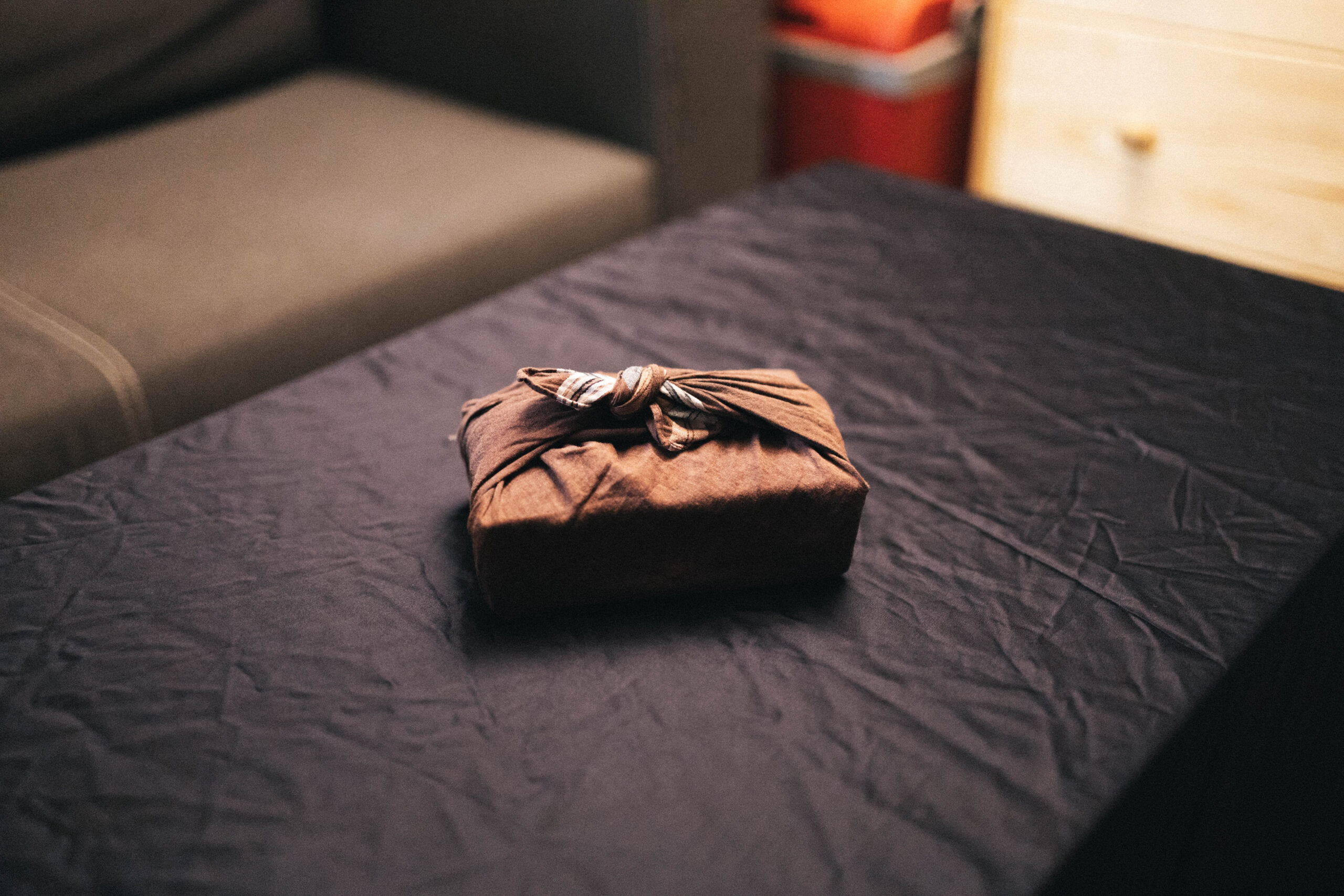
Why would you want to do a tarrot reading?
We are often dealing with issues or topics internally and it’s only when we’re saying them out loud that they manage to take a particular shape.
The process of tarrot reading can bring issues to light and make the situation more tangible.
The tarrot session can be a catalyst for personal growth and assist you in understanding yourself better.
What’s the difference between different tarot reading styles?
The style that I’m using is not meant to tell you the future, it’s much rather a reflection of your current state that brings to the surface themes and issues you are already dealing with on a subconscious level, manifesting this process and giving it images to concretely verbalize these topics.
2. The Preparation

In what state should the client be? What should they think about?
First of all, people should not be afraid. Tarot is not about predicting doom or revealing fixed destinies—it’s a reflective tool, a mirror for your inner world. It doesn’t impose anything on you; it simply helps you see more clearly. Approaching it with openness rather than fear allows the experience to become grounding, insightful, and even healing.
Before the session begins, it’s important to take a moment to connect with yourself.
This isn’t just a formality—it sets the tone for everything that follows. As you shuffle the cards, allow yourself to enter a quiet, present, and meditative state. This isn’t about clearing your mind completely, but rather softening the noise so that the thoughts, emotions, and questions that matter most can rise to the surface.
Often, as you move through this simple ritual of mixing the cards, you’ll find that certain concerns naturally come into focus. You might not have all your questions clearly formed at first—and that’s okay. What’s important is that you’re attuned to the issues that are currently shaping your inner life. These are the questions the tarot will help illuminate.
3. The Cards
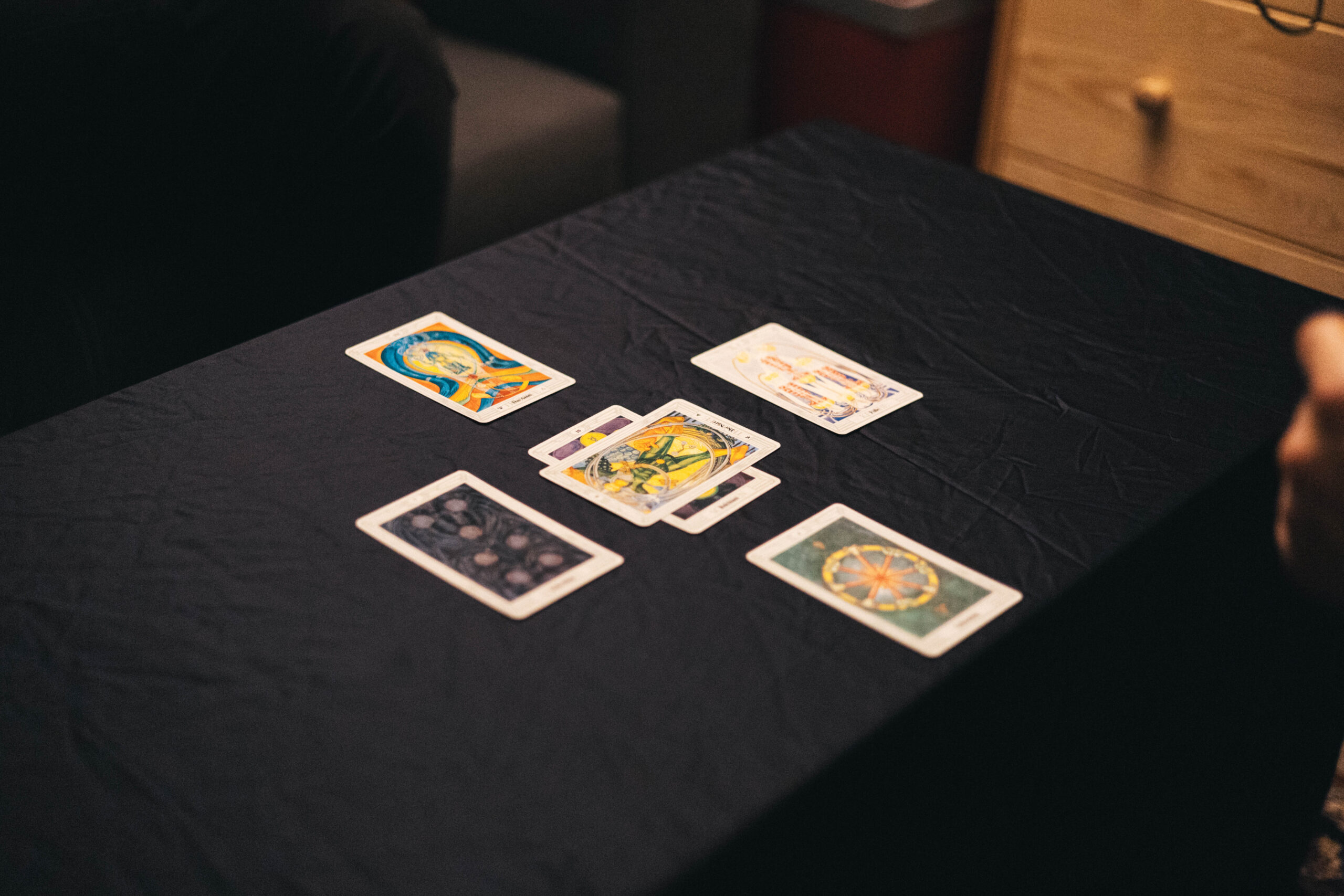
What’s the reason for using the Thoth Cards (made by Alister Crowley, painted by Frida Harris)?
The Thoth Deck is very surreal and expressionistic through it’s particularly distinctive art style, as well as unquestionably conducive in making instinctive associations. The imagery is especially vivid and speaks directly to the person seeing it.
Crowley and Waite (the creator of the RWS tarot deck) were part of the same secret society, each of them creating they’re own iconic decks.
Unlike the RWS deck, Thoth includes some astrology, alchemy, and Kabbalah in its card symbolism, creating a much more complex and abstract system that makes the actual reading richer.
The deck consists of 22 trump cards (Major Arcana) which present archetypal stages in our development in the style of the hero’s journey and 56 suit cards in 4 suits which represent intermediate stages of daily situations and emotions. Each suit being related to a different area of life.
4. The Interpretation
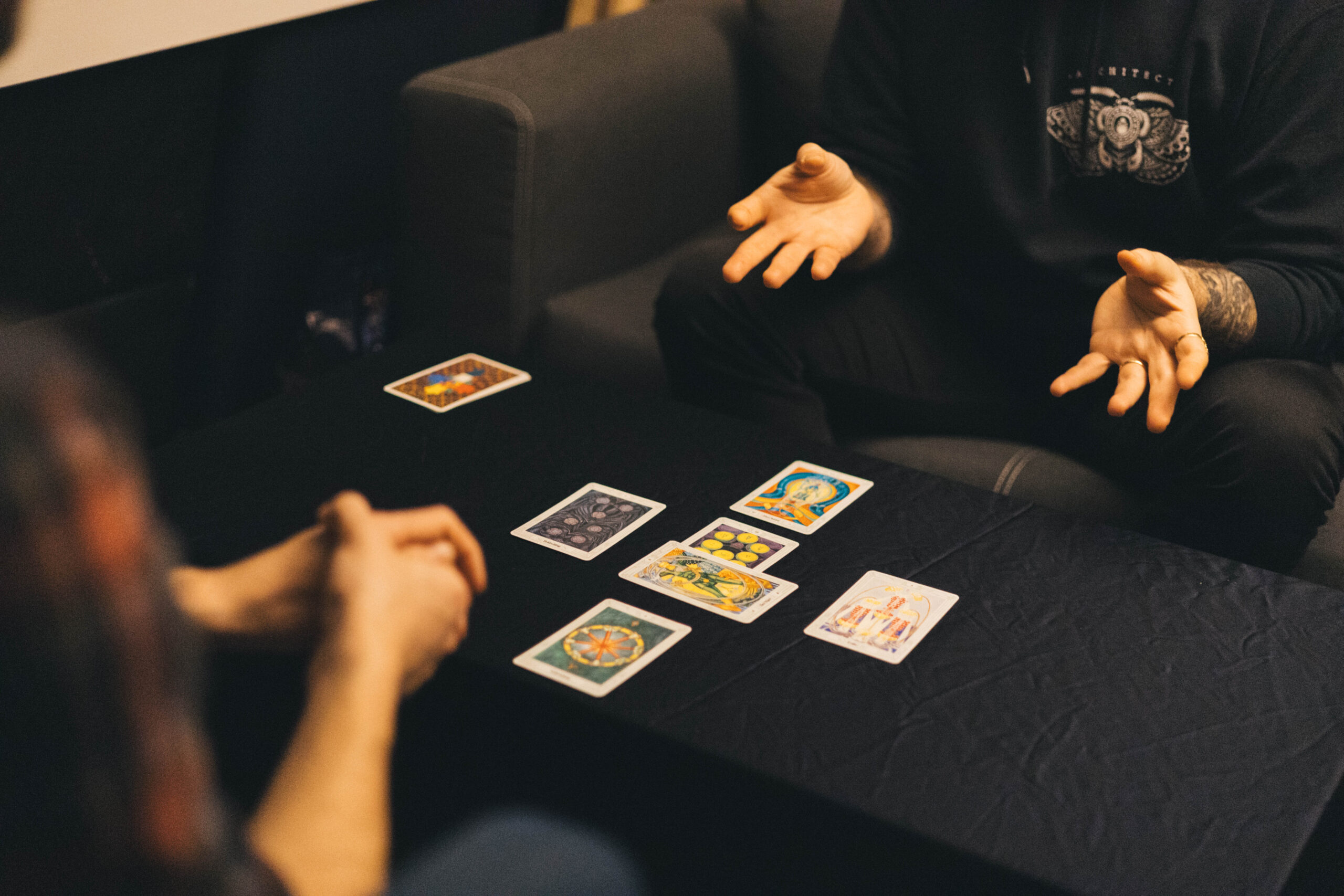
What’s the process?
You take 10 cards, each one carefully drawn from the shuffled deck. Every card holds its own meaning, shaped by its imagery, symbolism, and traditional interpretation. But the significance of a card doesn’t stand alone. Its meaning is also influenced by the position it falls into within the spread.
What each card represents:
The first card typically represents the present situation, while the second crosses it, symbolizing the immediate challenge. The third card looks at the foundation or root cause of the issue, and the fourth reveals the past. The fifth card shows potential or conscious goals, and the sixth speaks to what’s coming next.
The remaining four cards are usually laid out in a vertical line to the side and represent the querent’s attitude, external influences, hopes or fears, and finally, the likely outcome. Together, these positions and the cards within them weave a narrative, a layered story that reflects both known and hidden forces shaping the querent’s life.
Interpreting the spread requires intuition, knowledge of the card meanings, and an understanding of how the cards interact with each other. A single card may offer insight, but the full spread allows for a more nuanced reading, uncovering patterns, obstacles, and opportunities that may not be visible at first glance.
The process is fully confidential.
5. The Big Picture

Only at the end, once the full spread has been revealed, does the big picture comes into view. The spread begins to speak not just in individual moments, but as a whole. Connections between the past and future become clearer, internal and external dynamics reveal their influence and a cohesive message emerges. It is here, in this final moment that the tarot offers its true power: a glimpse of the larger journey, the underlying patterns, and a potential path toward the future.
6. The Selection
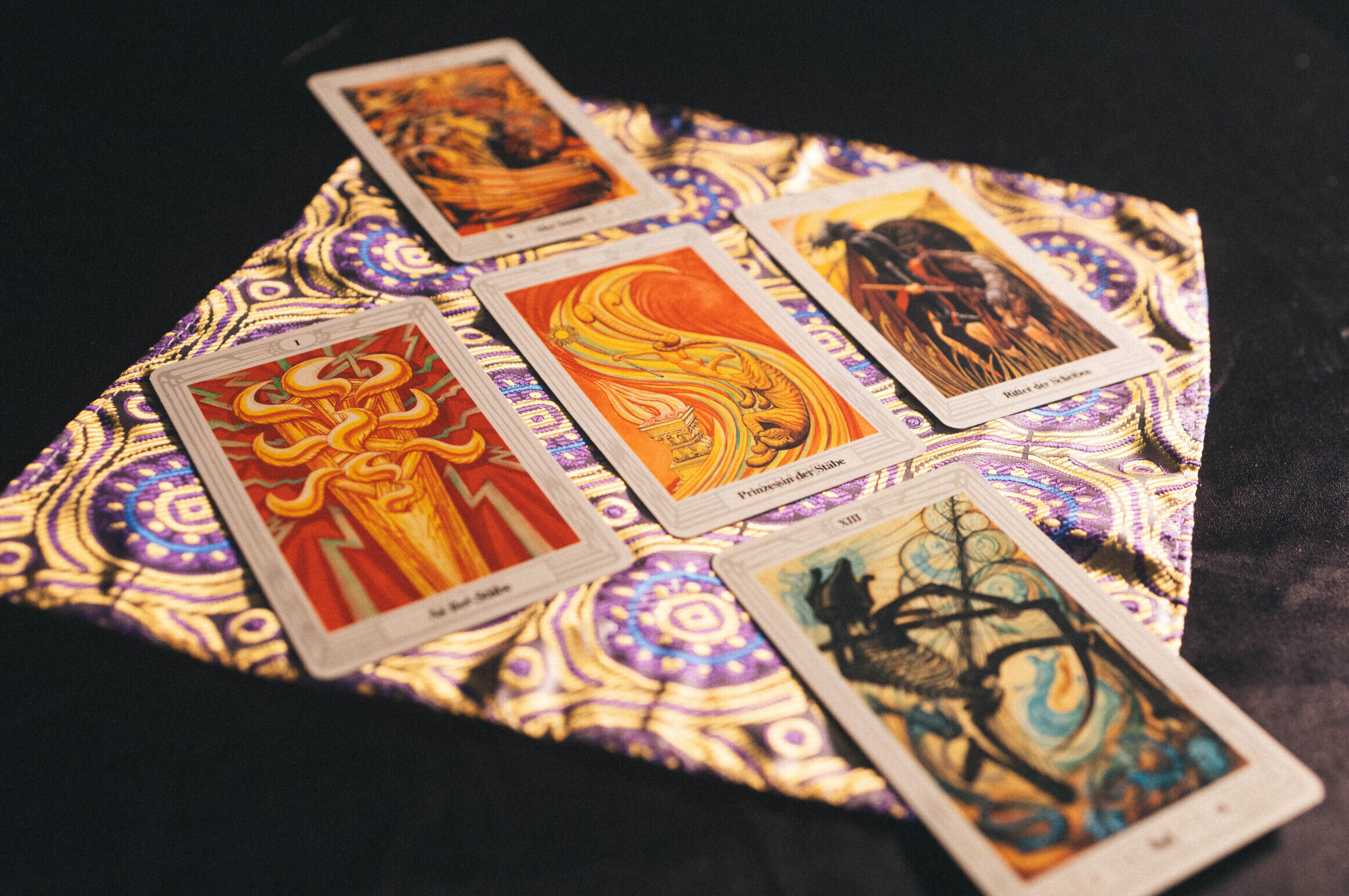
Out of these 10 cards, we focus in on the ones that carry the most weight, typically between two to four cards that seem to stand out. These are the cards that strike a chord, either by their symbolism, their position, or the emotional reaction they evoke. They’re not just cards with strong meanings, they’re the ones that seem to speak directly to the client’s deeper concerns, their recurring questions, or unresolved patterns.
These standout cards often represent the dominant themes shaping the querent’s life over time. They might point to a long-standing internal conflict, a repeated life lesson, or an unresolved emotional thread that resurfaces in different forms. Sometimes, it’s a pattern in relationships. Other times, it’s a career block, a fear, or an aspiration that hasn’t yet taken form. Whatever it is, these cards tend to reveal the core narrative running beneath the surface.
7. The Tattoo Design
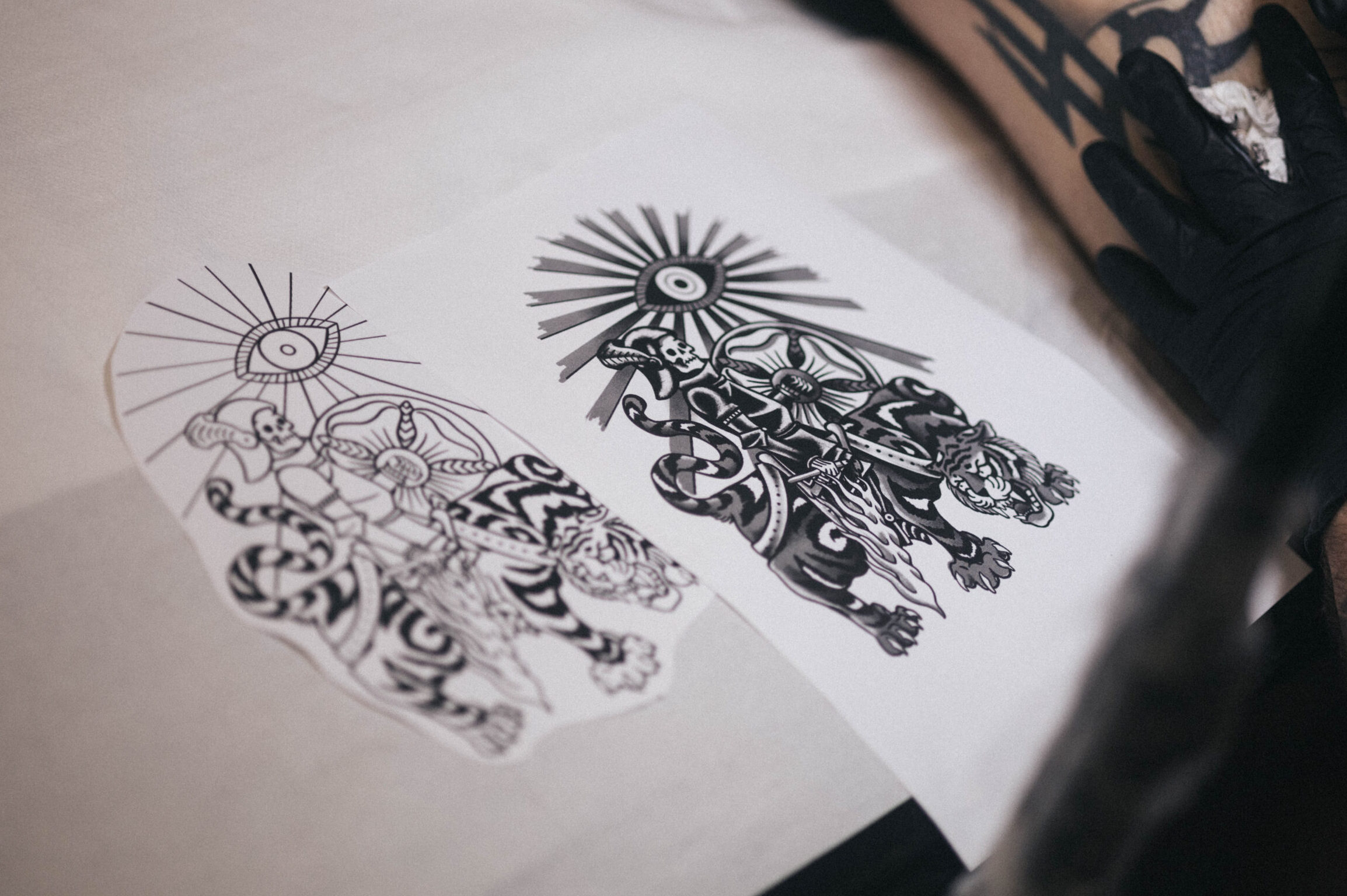
Out of the final selection, according to what we have discussed, I will create a unique design that suits the client and the situation subsequently.
This design, whether chosen as a tattoo or created as a personal poster, is more than just an aesthetic object. It becomes a talisman, a symbolic artifact that carries the essence of the reading. It distills the core insights, themes, and transformative messages into a visual form that the client can see, hold, and live with. It’s a way to anchor the intangible in the tangible.
Each element of the design, symbols, colors, shapes, or even chosen tarot imagery, reflects a part of the conversation that took place during the reading. These are not random decorations, they are carefully chosen representations of the energies and truths that emerged. The client doesn’t just remember the reading, they re-encounter it daily, in subtle and powerful ways. It acts as a quiet guide, a reminder of the path they’re on, the lessons they’re integrating, and the intention they’ve set for themselves.
8. The Tattoo Process
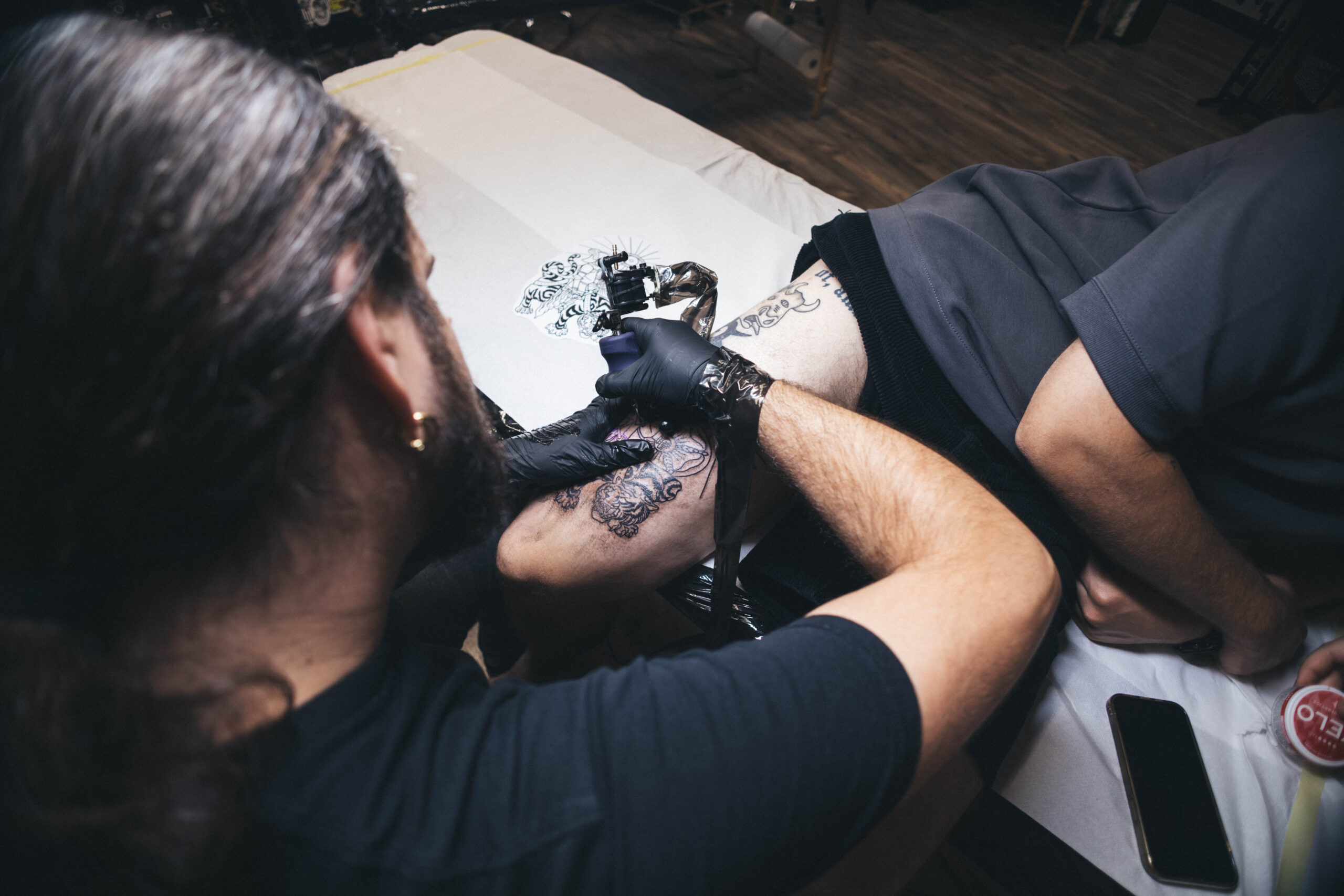
The tattoo process itself follows all the standard protocols associated with professional tattooing, ensuring a high level of hygiene, precision, and craftsmanship. From the initial consultation to the final inking session, the process respects both the spiritual significance of the design and the physical integrity of the client. Sterile equipment, clean environments, and the expertise of a skilled tattoo artist ensure that the experience is not only meaningful but also safe and technically sound.
Before the tattoo is applied, there’s room for adjustment. Certain details within the design, such as the scale, line weight, placement, or subtle symbolic elements, can be discussed and refined in collaboration with the tattoo artist. This allows the client to personalize the visual language, ensuring that it resonates deeply and aligns with both their aesthetic preferences and the symbolic intent of the reading.
9. The Tattoo
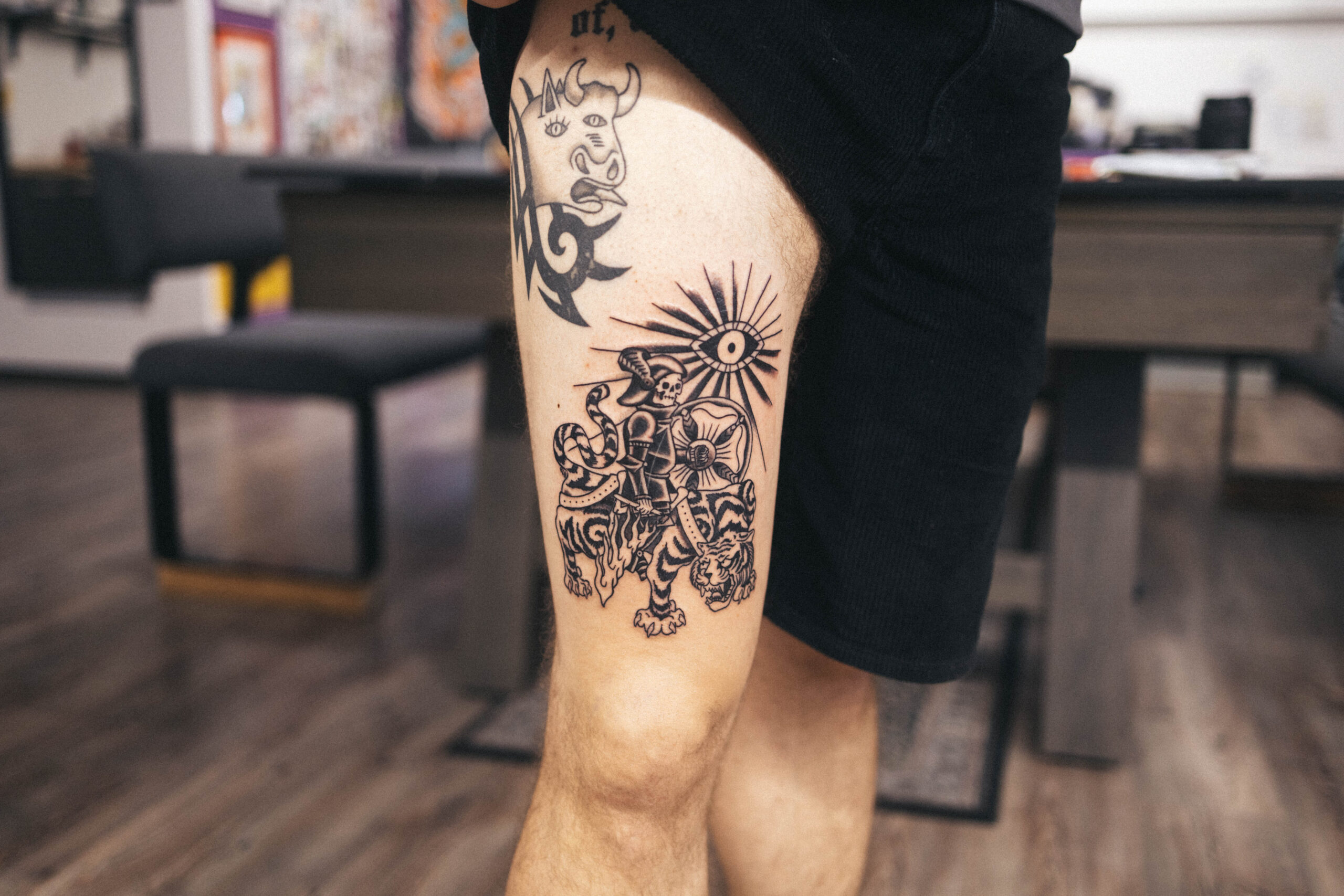
The tattoo represents something deeply unique and personal to the client. It isn’t chosen from a flash sheet or copied from someone else’s design, it’s created specifically for you, born out of your reading, your story, and your energy. No one else will ever have a tattoo that comes close to yours, because no one else walks the exact same path or carries the same inner landscape. This is not just a piece of art, it’s a reflection of who you are at a meaningful point in your life.